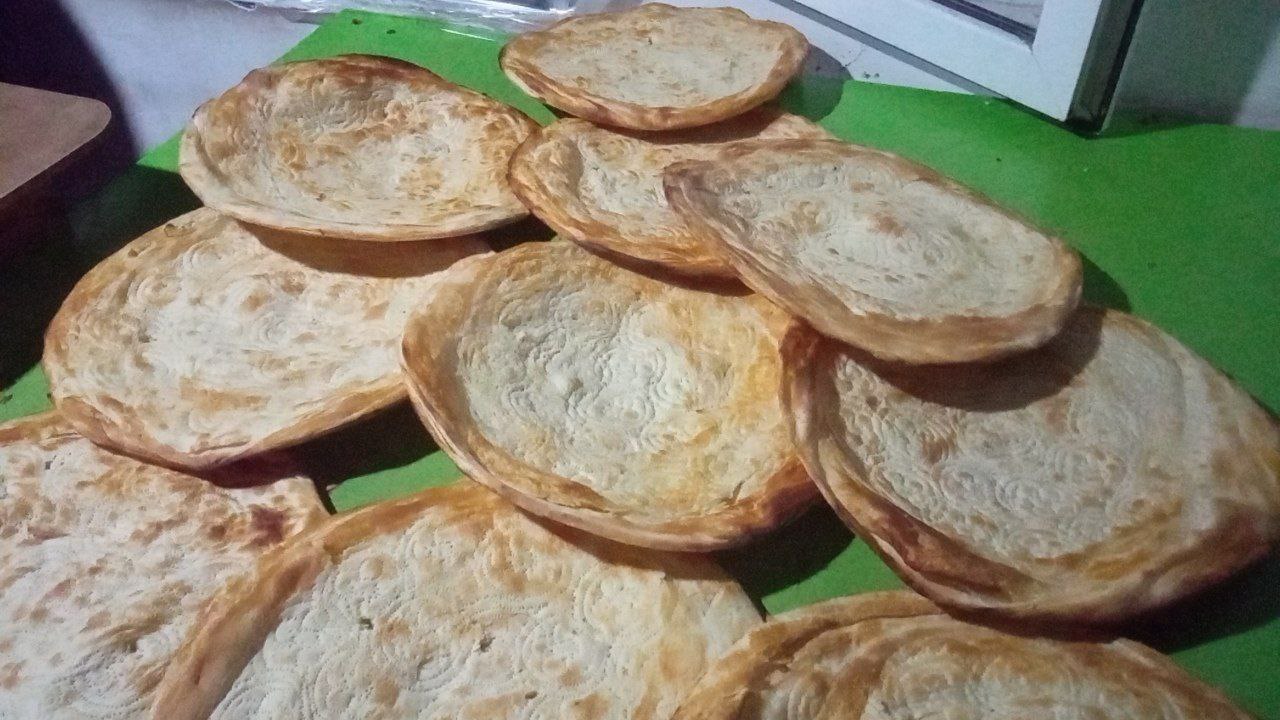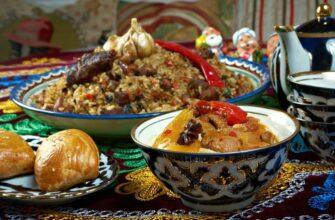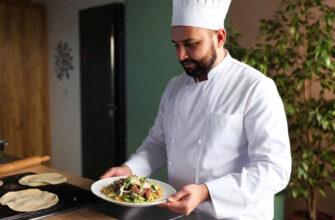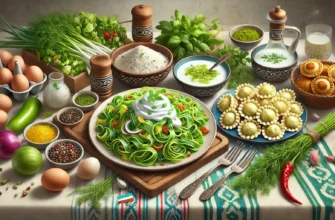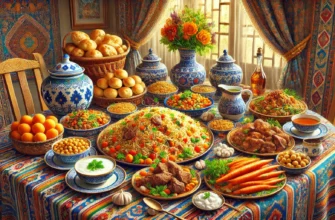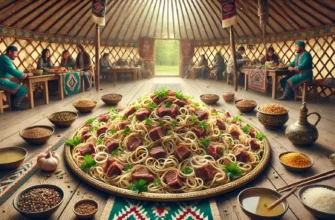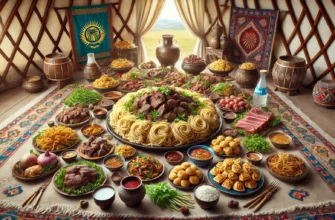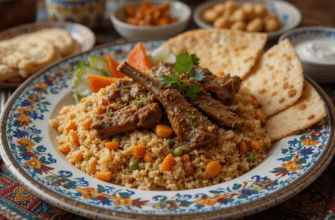Regional Variations in Uzbek Cuisine: Distinctive Features and Their Origins
Uzbekistan’s cuisine stands as one of Central Asia’s most vibrant culinary traditions, characterized by a rich tapestry of regional variations that reflect the country’s diverse geography, history, and cultural influences. This fascinating culinary landscape offers not just delicious food but a window into the complex historical and geographical factors that have shaped each region’s distinctive cooking styles, ingredients, and signature dishes.
Historical and Geographical Influences on Uzbek Cuisine
Uzbekistan’s territory was a central route on the Silk Road, and the various peoples, ideas, and goods that traveled through it have become intrinsically part of Uzbekistan’s culture, including its cuisine. The country has been influenced by numerous civilizations throughout history, including Iranian nomads, Scythians, Achaemenids, Greeks, Arabs, and Mongols, each leaving their mark on the local culinary traditions.
Largely thanks to the Silk Road, Uzbekistan’s culinary tradition is a fascinating mix of East and West. It offers both roasted meats and tandoor-baked bread reminiscent of Central and Eastern European countries like Turkey, Iran, and Morocco, as well as steamed dumplings and noodles found in Eastern Asian countries such as China and Nepal. This historical confluence has created a culinary landscape that is both unified in its core elements yet remarkably diverse across regions.
After gaining independence from the Soviet Union, cuisine in Uzbekistan played a significant role in developing national unity and a distinct identity “through the savvy use of national cuisine,” according to food historians Glenn Mack and Asele Surina. Some food historians believe that original Uzbek cuisine took its present form relatively recently, only 120-150 years ago, when the country also began experimenting with products and culinary techniques from European dishes.
Common Elements in Uzbek Cuisine
Despite regional differences, there are several unifying characteristics of Uzbek cuisine:
- Meat Centrality: Traditional Uzbek cuisine heavily features meat, particularly mutton, though beef is also commonly used, and horse meat appears in certain specialties.
- Use of Fat: The extensive use of sheep tail fat and various oils (cottonseed, sesame, or sunflower) makes Uzbek food highly nourishing and rich in calories.
- Bread Importance: Fresh bread (non) is an essential element of any Uzbek meal, often served with every dish and having cultural significance beyond mere sustenance.
- Rice Dishes: Plov (also called pilaf, osh, or palov) is considered the national dish, though its preparation varies significantly by region.
- Herbs and Spices: Distinctive use of herbs and spices such as coriander, zira (cumin), barberries, sesame, and basil (raihon) characterizes Uzbek cooking.
Regional Culinary Traditions
Tashkent Region
The capital city’s cuisine reflects its status as Uzbekistan’s most cosmopolitan center, with dishes that often incorporate more diverse ingredients.
Distinctive Features:
-
Tashkent Plov: Uses lamb as the main meat component (compared to Samarkand’s beef-based version) and often incorporates chickpeas and raisins for added texture and sweetness.
-
Norin: A special Tashkent dish made of finely chopped meat and homemade noodles, considered a regional specialty.
-
Moshkichiri: A unique dish of mixed beans and rice that is specifically identified as a “Tashkent specialty”.
-
Bread Style: Tashkent non tends to be light and airy compared to the denser breads of other regions.
Reasons for Distinctiveness:
The cuisine of Tashkent has been significantly influenced by its urban development and position as the administrative center during the Soviet era. This has resulted in more diverse culinary influences and innovations compared to other regions. As the capital city, Tashkent was also more exposed to Russian and other foreign culinary traditions, which have been incorporated into its regional style.
Samarkand Region
Samarkand, one of the oldest cities along the Silk Road, maintains some of the most traditional cooking methods and recipes in Uzbekistan.
Distinctive Features:
-
Samarkand Plov: Known for its fragrant saffron undertones and the use of beef rather than lamb. It’s prepared with a specific technique that results in a distinctive texture and flavor profile.
-
Naan/Bread: Samarkand-style non tends to be denser and more substantial than Tashkent varieties.
-
Sheep’s Ass: A distinctive regional specialty that was noted as “incredible” by visitors to Samarkand.
Reasons for Distinctiveness:
Samarkand’s position as a historical center of the Silk Road has preserved many ancient cooking traditions. The region’s distinctive cuisine reflects its historical importance and the cultural exchange that occurred there for centuries. The cooking methods have been passed down through generations with minimal changes, preserving authentic flavors and techniques.
Bukhara Region
Bukhara’s cuisine is so distinctive that food experts suggest it’s more accurate to call it “Bukharan cuisine” rather than simply Uzbek cuisine with regional variations.
Distinctive Features:
-
Oshi-Sofi Pilaf: Prepared in a copper cauldron, this version of plov is considered the signature dish of Bukhara. It often includes dried fruits, adding a sweet contrast to the savory flavors.
-
Bukhara Samsa: Distinctively triangular in shape and baked rather than fried. These savory pastries are a hallmark of the region.
-
Shurpa: While prepared throughout Uzbekistan, the Bukharan version typically uses beef.
-
Chalop: A refreshing cold soup made from yogurt, cucumbers, and herbs, perfect for the hot summer days in this region.
-
Kazan Kabob: Fried lamb with potatoes, served in a traditional cast-iron pot for maximum flavor development.
Reasons for Distinctiveness:
Bukhara’s cuisine reflects its history as an ancient center of Islamic learning and culture. The region’s distinctive culinary traditions have been influenced by Persian elements and elaborate court cooking styles from its days as an emirate. The use of dried fruits and distinctive spice combinations shows the historical trade connections with other regions.
Khiva and Khorezm
This northwestern region has developed unique dishes that stand apart from those in the more central areas of Uzbekistan.
Distinctive Features:
- Tukhum Barak: Dumplings filled with egg, a simple yet flavorful specialty unique to Khiva.
- Shivit Oshi: Green dill noodles that are distinctive to this region and reflect local herb usage.
- Khorezm Samsa: Fried rather than baked, with minced meat fillings that differ from other regional varieties.
- Patir: A flaky, layered bread that pairs well with tea or meat dishes.
Reasons for Distinctiveness:
Khiva’s relative isolation as a desert oasis city has allowed it to develop and maintain unique culinary traditions. The region’s proximity to Turkmenistan and its history as a separate khanate have influenced its distinctive cooking styles and flavor preferences.
Fergana Valley
Known as the “food basket” of Uzbekistan, the Fergana Valley region offers some of the most agriculturally rich cuisine in the country.
Distinctive Features:
- Vodi Plov: Traditional Fergana Valley plov made using a darker variety of rice (“vodi” means “valley”). This creates a different texture and flavor profile than other regional versions.
- Pomegranate Usage: Extensive use of pomegranates in cooking, particularly in the local variations of plov. The Fergana Valley pomegranates can grow to over half a kilo in weight and are famous for their quality.
- Agricultural Bounty: The region is known for exceptional fruits and vegetables that feature prominently in its cuisine.
Reasons for Distinctiveness:
The Fergana Valley’s continental climate, with hot summers and mild winters, and the Syr Darya River stretching through the region, have created ideal agricultural conditions
. This has allowed farming to flourish, providing an abundance of fresh produce that distinguishes the region’s cuisine. The valley’s relative isolation by mountains has also helped preserve distinctive cooking methods and dishes.
Key Dishes with Regional Variations
Plov (Pilaf)
Plov is Uzbekistan’s national dish and has been recognized by UNESCO as part of the country’s intangible cultural heritage. However, its preparation varies significantly across regions:
-
Tashkent Plov: Uses lamb, often includes chickpeas and raisins.

-
Samarkand Plov: Uses beef and is known for its fragrant saffron undertones.
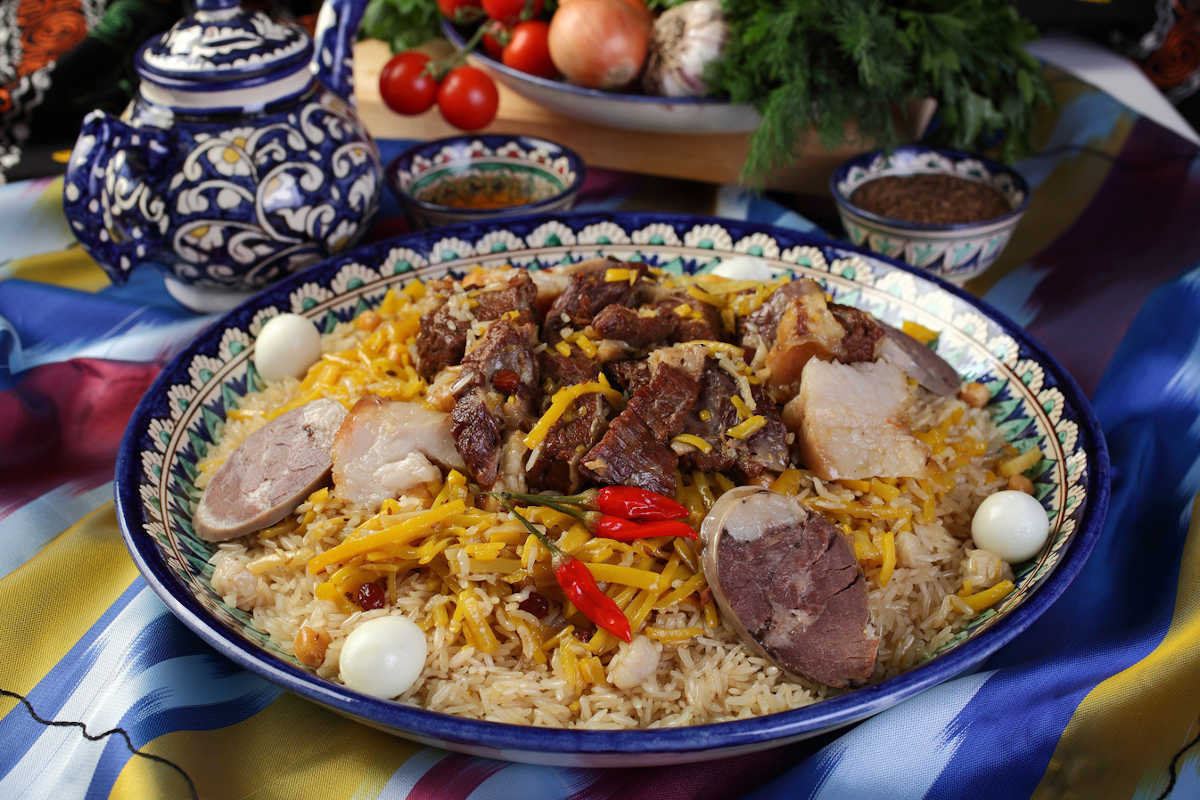
-
Bukhara Plov: “Oshi-Sofi” includes dried fruits for a sweet-savory contrast.

-
Fergana Valley Plov (Vodi Plov): Uses a darker variety of rice and often incorporates pomegranates.

The variations in plov reflect not only different ingredient availability but also historical preferences and cultural influences unique to each region.
Samsa
These savory pastries show remarkable regional diversity:
-
Bukhara Samsa: Baked and triangular in shape.

-
Jizzakh Samsa: Large, with substantial meat filling.

-
Karshi Samsa: Finger-shaped and graceful in appearance.

-
Khorezm Samsa: Fried rather than baked, with minced meat.

-
Kuk-Samsa: Made with greens and spinach.

The history of samsa dates back to the 11th century in Samarkand and was influenced by Persian traders traversing the Silk Road. The samsa was inspired by the Persian dish “sanbosag,” which translates to “triangular pastry”. Its portable nature made it ideal for travelers, contributing to its spread across Central Asia.
Bread (Non)
Bread varieties differ significantly by region:
-
Tashkent Non: Light and airy in texture.
-
Samarkand/Bukhara Non: Denser and more substantial.

-
Bukhara Obi-Non: Distinctively ornamented flatbreads.

-
Patir: A flaky, layered bread particularly associated with Khiva.
Ingredients and Cooking Techniques
Regional Ingredient Preferences
Different regions favor particular ingredients based on agricultural conditions and historical preferences:
-
Meat: While mutton is traditional throughout Uzbekistan, Samarkand plov uses beef, Tashkent uses lamb, and some specialties, particularly in the north, use horse meat (Qazi).
-
Rice: Fergana Valley uses a darker variety, while other regions may use different rice types depending on availability and tradition.
-
Fruits and Vegetables: The Fergana Valley is particularly known for its pomegranates and other fruits, which feature prominently in regional dishes.
-
Spices: While all regions use spices like zira (cumin), the balance and combination vary regionally, reflecting historical trade connections and local preferences.
Distinctive Cooking Methods
Cooking techniques also show interesting regional patterns:
-
Tandoor Usage: The use of traditional clay tandoor ovens varies by region, influencing the preparation of bread and samsa.
-
Kazan Cooking: The use of the traditional kazan (large cast-iron pot) is universal but with regional techniques that impact flavor development.
-
Steaming vs. Frying: Some regions prefer steamed dumplings (manti), while others favor fried versions or different cooking methods for similar dishes.
Social and Cultural Aspects of Regional Cuisine
Beyond mere preparation differences, regional cuisines in Uzbekistan reflect deeper cultural and social patterns:
-
Gender Roles: Some Uzbek dishes are cooked only by men, while others exclusively by women, with these patterns varying by region.
-
Seasonal and Ceremonial Dishes: The cooking of special dishes is connected with particular holidays, festivals, important events, and beliefs, with regional variations in these practices.
-
Dining Customs: While hospitality is universal throughout Uzbekistan, the specific rituals and customs around meal service vary by region.
A fascinating cultural aspect of Uzbekistan’s national dish, plov, is its association with fertility and vitality. In many regions, plov is traditionally eaten on Thursdays – considered a popular day for conceiving children – due to its widely believed aphrodisiac qualities.
Conclusion
The regional variations in Uzbek cuisine offer a fascinating window into the country’s complex history, geography, and cultural influences. From the cosmopolitan flavors of Tashkent to the ancient cooking traditions of Samarkand, the distinctive Bukharan cuisine, the unique specialties of Khiva, and the agricultural bounty of the Fergana Valley, each region has developed its own culinary identity while remaining part of the broader Uzbek culinary tradition.
These regional differences have emerged from a combination of factors: geographical conditions and available ingredients, historical influences from various civilizations, cultural exchanges along the Silk Road, proximity to neighboring cultures, and the preservation of traditional cooking methods. Together, they create a rich and diverse culinary landscape that continues to evolve while maintaining its distinctive regional characteristics.
For visitors to Uzbekistan, exploring these regional food traditions offers not just delicious meals but also insights into the country’s cultural heritage, historical connections, and the creative adaptations that have allowed Uzbek cuisine to thrive across diverse environments and historical periods.


